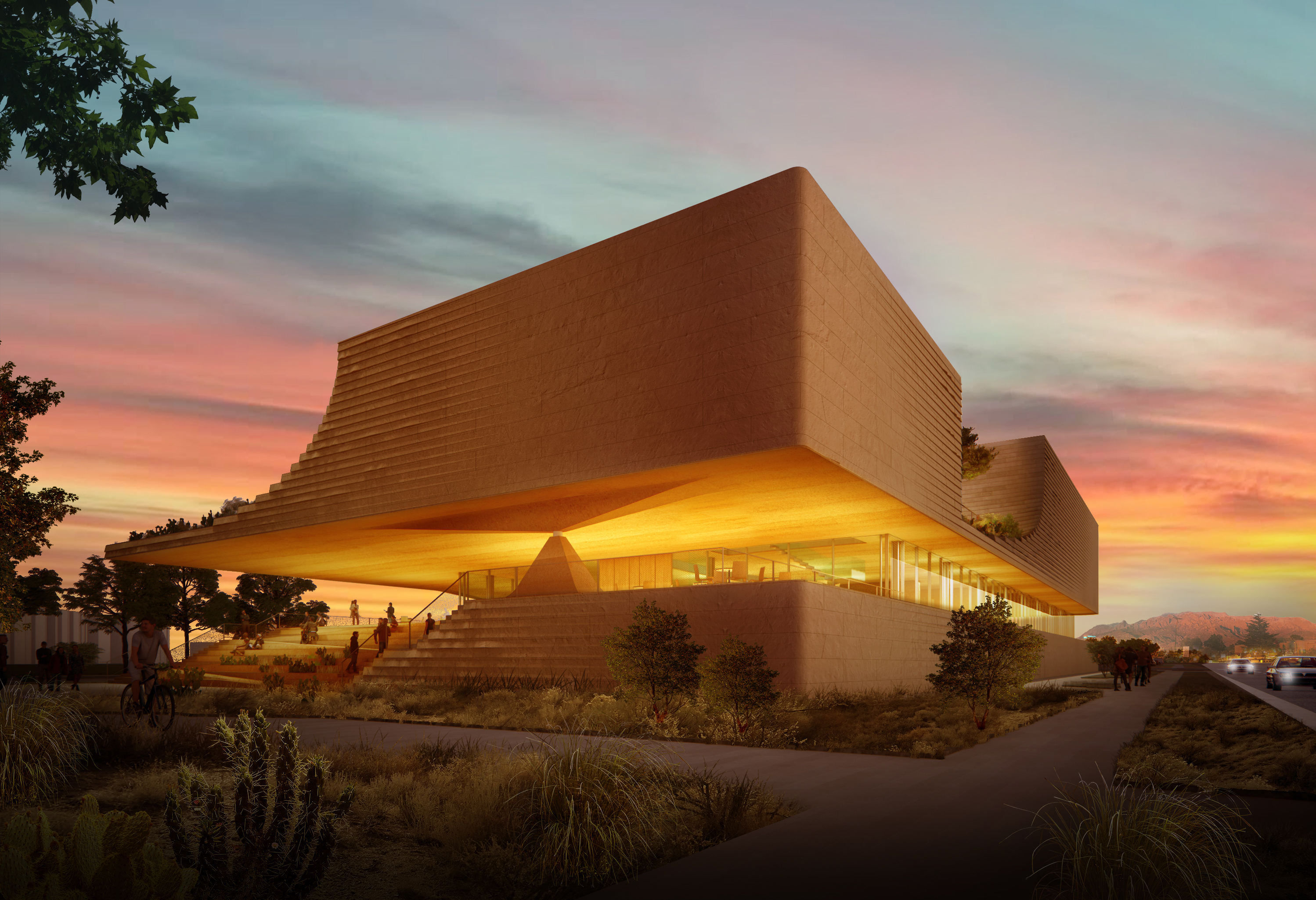Center For Collaborative Arts

Project Description
After review of the most critical needs across all CFA programs, the below list reflects prioritization of the types of spaces needed in the new Center for Collaborative Arts and Technology (CCAT):
- Student Common / Gathering Areas
- Concert / Performance Hall
- Maker Space / Classrooms
- Art Exhibit / Galleries
- Center for Film & Digital Arts
- Faculty Research Studio
- Offices
The current facilities prevent CFA from growing its potential in enrollment. In addition, CFA is currently not meeting a critical accreditation standard due to the absence of a dedicated performance space. There is a misconception that Popejoy Hall is part of CFA, which is not the case. Given Popejoy's focus on hosting non-UNM events like touring Broadway musicals, the venue is no longer a feasible option for CFA to utilize on a regular basis due to frequent re-prioritization. The intent of this project is not to replace the Center for the Arts building because it encompasses four performance spaces, including Keller Hall and Rodey Theater. It is also home to the Art Museum and two academic programs.
The overall project cost for Phase 1 of the two-phase project is $65 million for 62,100 GSF building which will contain exhibition spaces, theatre and music rehearsal spaces and a large music concert hall. This estimate ensures that the project will address the cost premium that is unique to fine arts facilities, as well as the ever-increasing construction costs in a post-pandemic market. The GO bond request totals $45,000,000 for Phase I of the project.
Additional Background
To remain competitive with peer fine and studio art colleges in the southwest in recruiting and retaining students and faculty and to be able to grow New Mexico's workforce in the film, music, and other creative arts industries, the College of Fine Arts must offer the technology and facilities that are necessary for these practices. Students and faculty need instruction, research, rehearsal, and performance space with appropriate ventilation, sound systems, light, and acoustics, depending on each specialized art program.
A state-of-the art fine arts facility is not only integral to UNM's recruitment strategies to grow enrollment, but it is also essential for promoting retention through centralized student activities and services that support student success. Additionally, establishing a collegiate climate where a student can meet with faculty and collaborate with classmates in a safe and inclusive space provides for improvements in attendance, achievement, retention, and eventual graduation.
The facility will provide space and equipment for interdisciplinary programs that have become popular due to the emerging film, television and streaming industries in New Mexico, and a growing interest in online gaming and media visualization. CFA has created new interdisciplinary pathways, as well as service courses so students from across campus may take their interest and passion for the arts to the next level. CFA's Bachelor of Arts degree in Interdisciplinary Arts (BAIA) has become the fastest growing degree in the College, allowing students to reach across the College and the campus to combine coursework in several disciplines and become valuable members of New Mexico's workforce after graduation.
The project will allow CFA to maintain accreditation, grow enrollment, and produce graduates of the 19 degrees and 10 minors offered by the College. The existing facilities are failing to do this and as a result, all departments except the Film and Digital Arts Department in CFA are losing students.
Without a new facility, UNM's Master of Fine Arts in Photography program is in jeopardy of losing its rank of 8th best photography program in the nation. The Master of Fine Arts in Studio Art program could lose its ranking of 64th in the nation. The world's only Flamenco degree program could also be lost. The Arts-in-Medicine Program, which partners with HSC and serves tens of thousands every year, could be jeopardized.
Total GO Bond Request: $45 million
